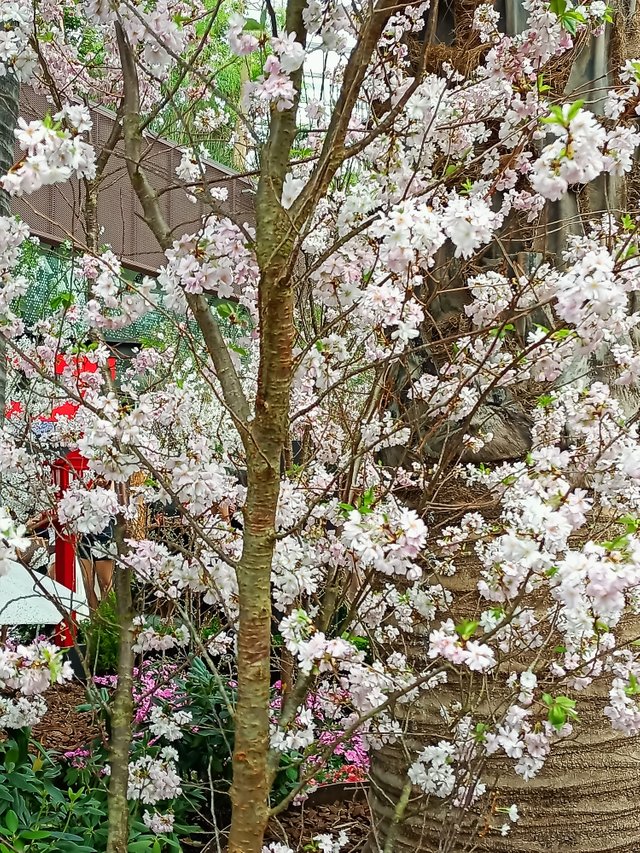Sakura Flower Display

The Sakura display at the Flower Dome is now on until the 21st of April. You can purchase tickets online or at one of the offices in the gardens. Adults pay $12 per entry. Seniors and children pay $8.
Last week, I got up close to the peach and cherry blossoms in the Flower Dome. It was a beautiful display of blossoms and very informative too, with sign boards explaining the cultures and festivals.
Here are some photos from my visit.


Paper Cranes
According to Japanese tradition, folding 1,000 paper cranes grants you wishes, happiness, eternal good luck, or even long life and recovery from illness or injury. Origami cranes (orizuru) folded into a group of 1,000 are known as a senbazuru, with “sen” meaning “thousand” in Japanese. The crane is an auspicious creature in Japanese folklore, and is said to live for 1,000 years. - Information signboard



Temple of the Golden Pavilion
A UNESCO World Heritage Site, Rokuonji Temple, more widely known as Kinkakuji Temple, is a renowned Zen Buddhist temple in northern Kyoto. Named after the famed Golden Pavilion (Kinkakuji) which serves as a centerpiece of the temple grounds and one of the most famous and recognisable historic structures in Kyoto, the temple is considered a must-see destination by visitors to the verdant city. - Information signboard





Torii
A torii is a traditional Japanese gate, usually located at the entrance of Shinto shrines. It marks the transition from the profane to the sacred, though it is also sometimes simply used to denote a place that has deep religious meaning. It signals entrance into a hallowed space, and it is customary to bow one’s head before passing beneath it. - Information signboard


Tea House
A chashitsu or ‘tea house’, is an architectural space designed for Japanese traditional tea ceremony gatherings. Usually small, simple wooden buildings with thatched roofs, they are located in the gardens or grounds of private homes, temples or parks. Typical features include windows and sliding doors made of wooden lattice covered in translucent Japanese paper, tatami mat floors and an alcove.
The Japanese tea ceremony, chado, also known as the Way of Tea, is the ritualised preparation and serving of powdered green tea, matcha. It is a bonding experience between the host and his guests, of mindfulness, respect and a focus on the present. - Information signboard





%20-%20Copy.jpg) ~
~%20-%20Copy.jpg) >>>>>>>>>>>>>>>>>>>>
>>>>>>>>>>>>>>>>>>>> 
Thank you, friend!


I'm @steem.history, who is steem witness.
Thank you for witnessvoting for me.
please click it!
(Go to https://steemit.com/~witnesses and type fbslo at the bottom of the page)
The weight is reduced because of the lack of Voting Power. If you vote for me as a witness, you can get my little vote.
You've got a free upvote from witness fuli.
Peace & Love!
Thank you. Much appreciated.
Your post has been rewarded by the Seven Team.
Support partner witnesses
We are the hope!